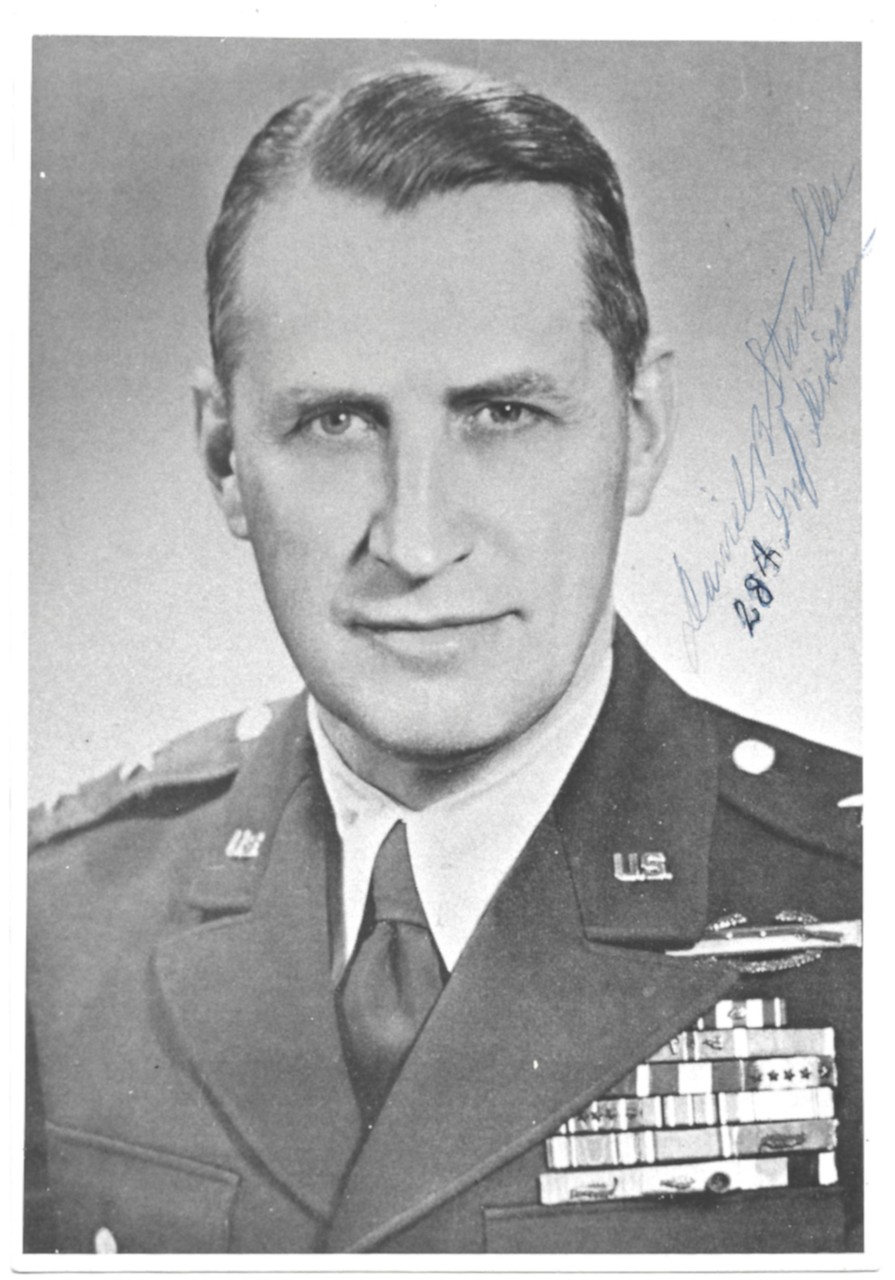On the morning of 16 December 1944, Lt Col Daniel B Strickler received orders from Major General (Maj Gen) Cota, the commander of the US 28th Infantry Division. The momentous order was to repel the German attack at all costs.
Due to Strickler‘s legendary resistance in Höhendörfer near Consthum, two German armoured divisions were forced to share the advance route via Marnach. These had been cleared on the second day of the attack, causing loss of valuable time. On the night of 18 December, German units succeeded in bypassing the stubbornly defended Consthum. It was only then that Lt Col Strickler abandon the village and retreated to Wiltz with his remaining 700 men.
Upon arriving, Strickler was ordered by Maj Gen Cota to take command of the US 110th Infantry Regiment of the US 28th Infantry Division and to carry out the defence of Wiltz with all the troops still available.
Under great haste, ’Task Force Strickler’ (combat group) was assembled from latecomers such as musicians from the division band. This also included clerical and kitchen personnel with the support of an engineer unit and the remaining tanks of the 707th Tank Battalion.
The Panzer Lehr Division had failed to penetrate Wiltz via Erpeldingen, the town was visibly bypassed to the north and southwest by the 5th Fallschirmjager (Parachute) Division on 19 December 1944. By the hourthe German advance came to a standstill.
The following morning, Maj Gen Cota withdrew to Sibret with the division staff. In the meantime, the town was almost surrounded, and the ammunition supply was running out. For Strickler, his mission was accomplished and at 23:00 he gave his officers the order to make their way to Bastogne on their own. He was one of the last to leave Wiltz and after 6 days, with iron stamina, managed to make his way behind the German lines to Vaux-Les-Rosiers. His bravery and courage were exemplary and a manifestation of the fighting spirit of the US 28th Infantry Division.
To this day, the town of Wiltz has not forgotten General Daniel B Strickler and honours him in the Bataille des Ardennes Museum.
